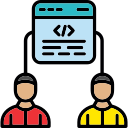Introduction to Low-Code Development Platforms
Chosen theme: Introduction to Low-Code Development Platforms. Welcome to a friendly, inspiring tour of how visual tools, drag‑and‑drop builders, and ready‑made connectors help teams ship real software faster. Stay with us, subscribe for practical tips, and tell us what you want to build first.

Why Low-Code Is Changing How We Build Software
Teams used to wait weeks for a developer to free up time; now a prototype can appear in a single afternoon. A support manager once told me she turned a messy spreadsheet into a mobile-ready portal over a weekend, then refined it with feedback on Monday morning.
Core Building Blocks of Low-Code Platforms
01
Visual UI Builders
Drag components onto a canvas, bind them to data, and preview instantly on desktop and mobile. This visual feedback loop keeps focus on user experience, not scaffolding. Share a screenshot of your first screen layout, and we will spotlight creative designs in future posts.
02
Data and Workflow Modeling
Define entities, relationships, and validation rules without writing long schemas. Then orchestrate approvals or notifications using visual process diagrams. If you have a tricky workflow in mind, describe it below, and we will suggest a clean, low-code blueprint.
03
Connectors, Integrations, and Automation
Prebuilt connectors link your app to email, databases, payment gateways, and CRM systems. Triggers and actions automate repetitive steps so people focus on higher-value work. Tell us your essential integration, and we will share a pattern to wire it up quickly.
Your First Low-Code App: A Guided Starter Path
Pick a Platform and Scope a Tiny Win
Choose a platform with a generous free tier and a focus on the data types you use most. Define success as one screen and one workflow that saves someone ten minutes daily. What tiny win will you chase first? Declare it publicly to stay accountable.
Design the Data and Flow
List the fields that matter, then design a simple flow from capture to confirmation. Use sensible defaults and validation so forms feel forgiving. Drop a comment with your data model, and we will suggest a crisp refinement you might have missed.
Test, Share, and Iterate with Real Users
Invite two colleagues to try the app, watch where they hesitate, and adjust immediately. Small fixes compound into big wins. Share a short before-and-after story, and we will feature standout iterations in our newsletter for new builders.
Security, Governance, and Responsible Adoption
Use role-based access to restrict sensitive screens and data operations. Enable audit trails for important actions, and review them regularly. If you drop a note about your team structure, we will suggest a clear permission model that maps to your reality.
Store only what you need, encrypt at rest and in transit, and separate environments for testing and production. Document data flows clearly. Share your industry, and we will highlight compliance considerations you should include from day one.
A small expert group can curate templates, coding standards, and review checklists. Short workshops help citizen builders avoid pitfalls. Tell us your training plan, and we will propose a simple roadmap with quick wins and measurable adoption metrics.

From Prototype to Production: Scaling Low-Code
Performance and Architecture Choices
Monitor slow screens, index frequently queried fields, and offload heavy tasks to background jobs. Keep components reusable and focused. If you paste a short description of your app’s hotspots, we will suggest lightweight tweaks to speed things up.
DevOps, Versioning, and Environments
Use separate development, test, and production environments with versioned releases. Automate backups and rollbacks. Document release notes clearly. Want a sample checklist? Ask below, and we will share a concise template for safe, predictable launches.
Working with Pro Developers
Blend low-code speed with custom extensions where needed. Developers can add APIs, refine queries, or polish complex UI interactions. Share where you feel blocked, and we will outline when to go custom versus staying within the platform’s sweet spot.
Real-World Stories and Lessons
A warehouse lead mapped a damaged-item workflow on Friday, built it with low-code on Saturday, and reduced Monday chaos by ninety percent. The team’s favorite part: instant photo uploads and automated follow-ups. What weekend MVP would change your week?
Real-World Stories and Lessons
A small nonprofit replaced endless email threads with a visual scheduler that synced to calendars and sent reminders. Volunteers finally saw clear shifts, and no-shows dropped dramatically. If scheduling drains your energy, describe your process and we will suggest a starter layout.


